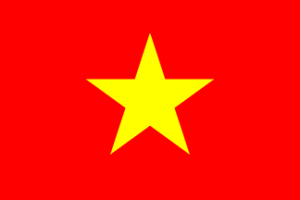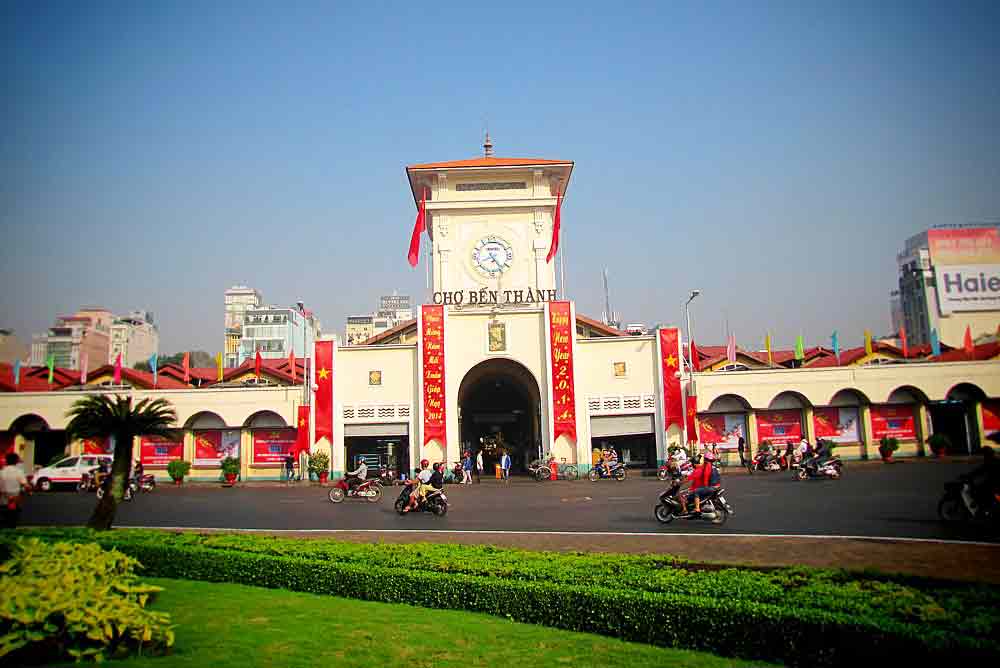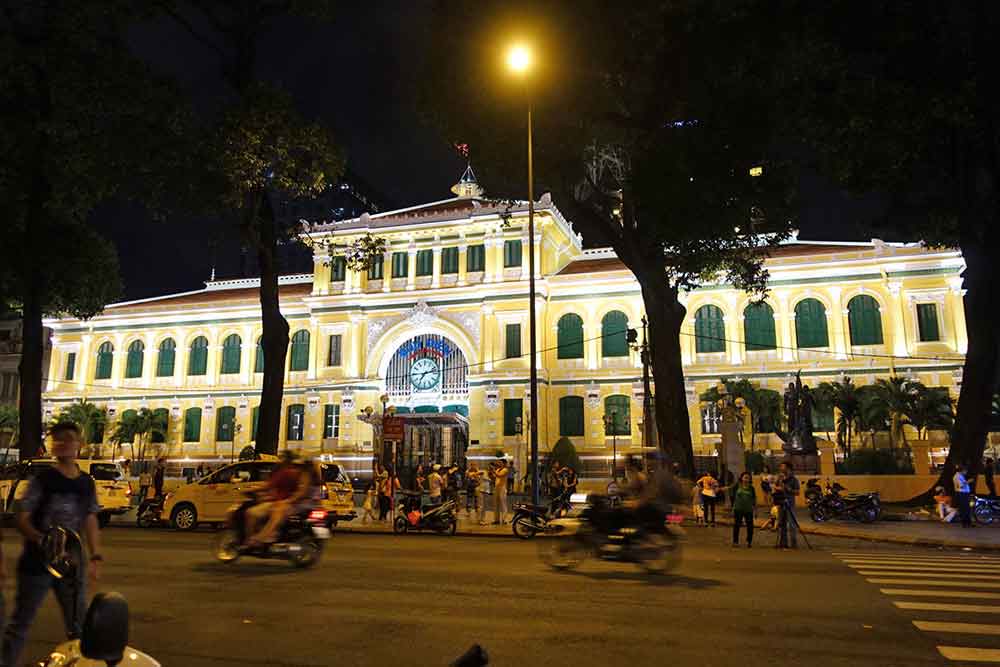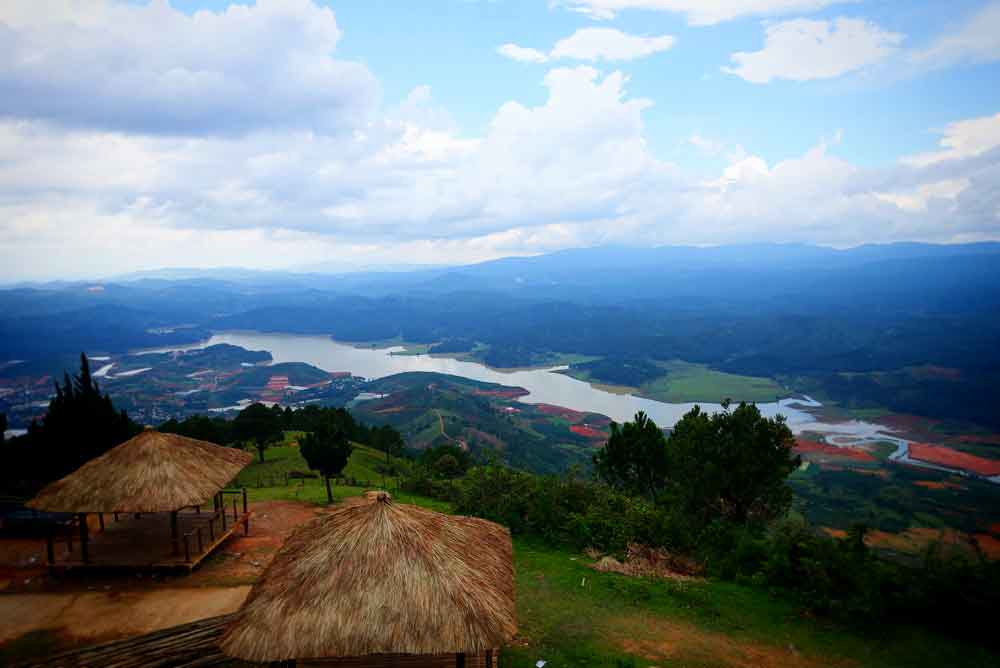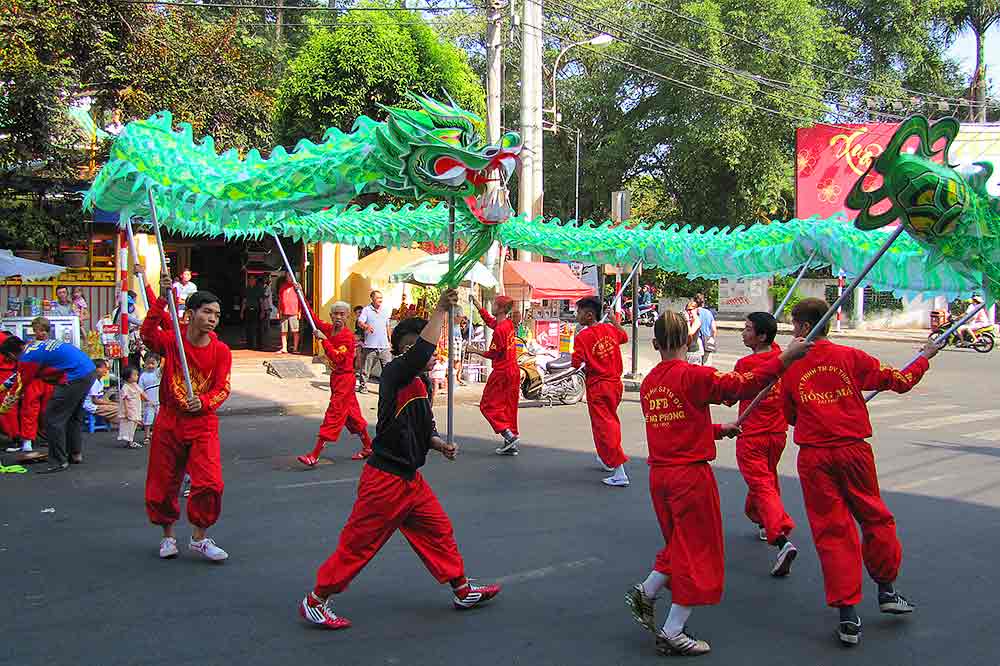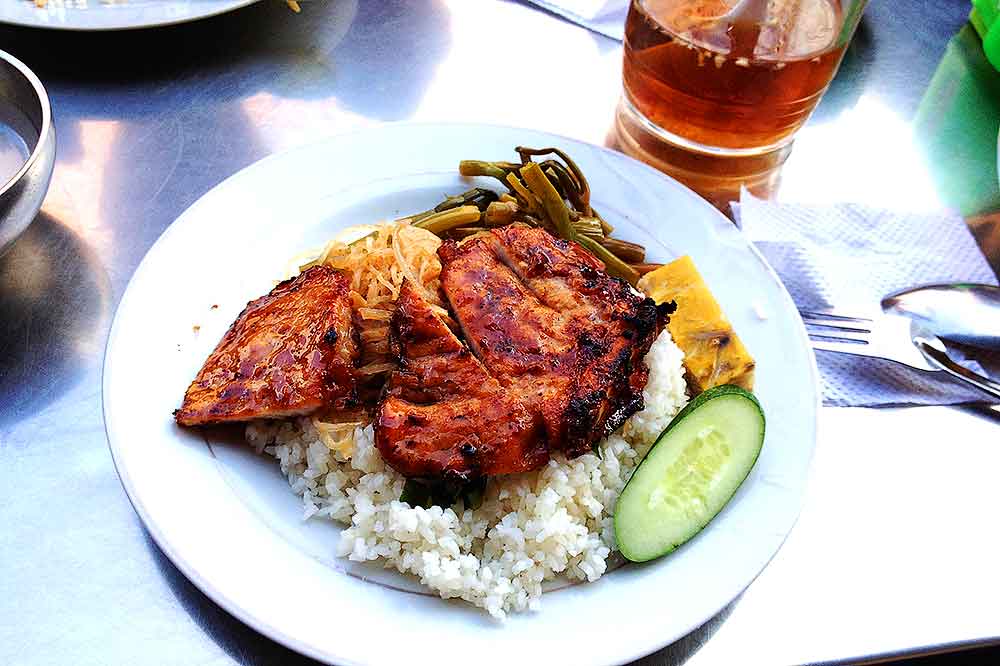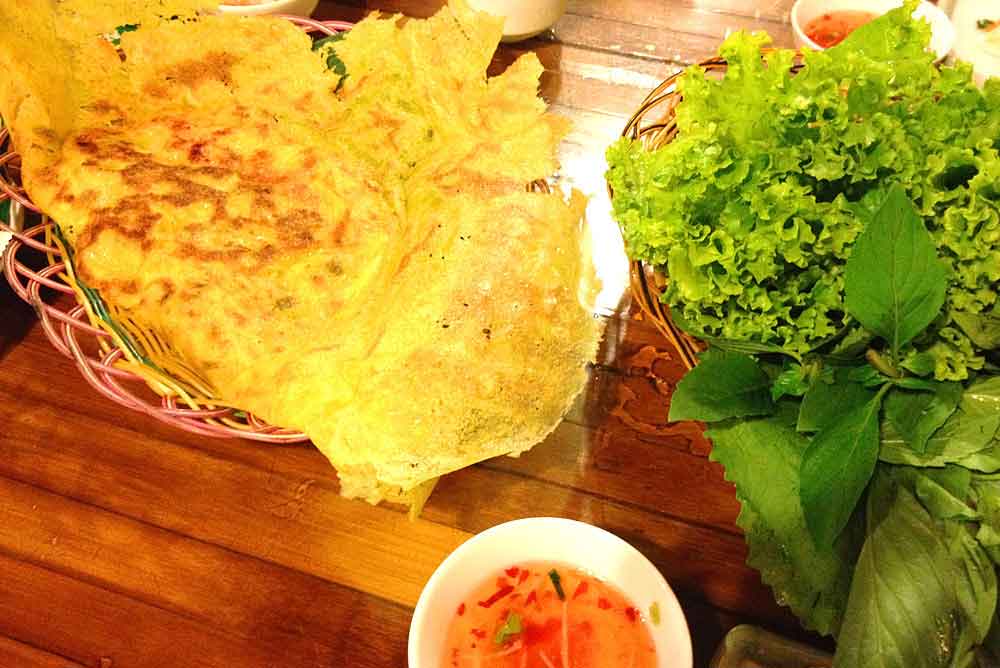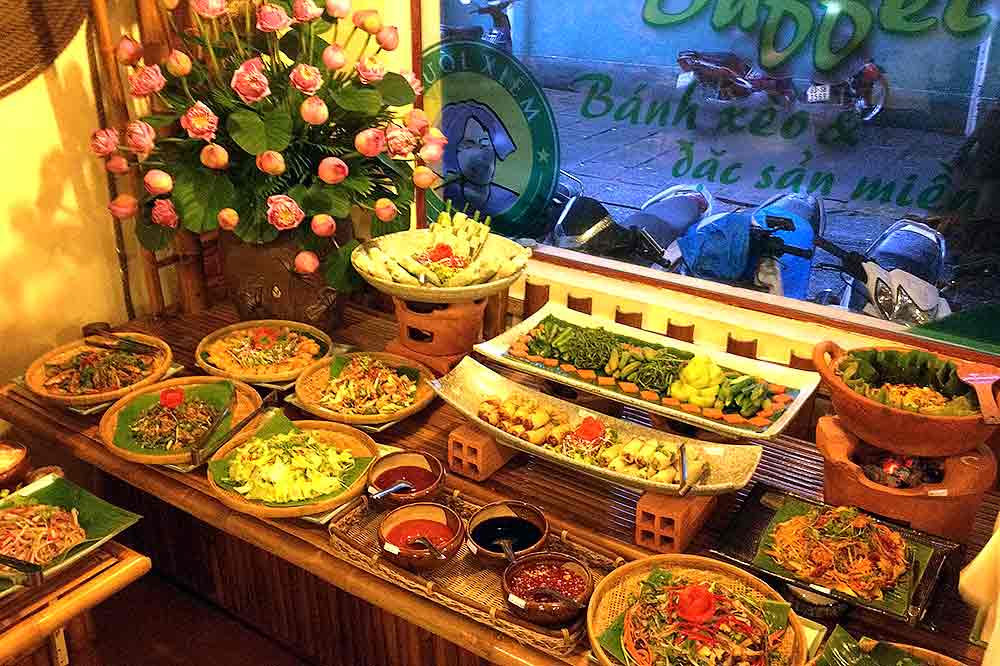Vietnam Travel Guide
Geography of Vietnam
Vietnam is bordered by China to the north, Laos to the northwest, Cambodia to the southwest, and the South China Sea (referred to as the East Sea in Vietnam due to political tensions with China) to the east.
Vietnam has a long thin shape, similar to a dragon, so it’s easily traveled from north to south.
At its narrowest point in the central region’s Quảng Bình Province, it’s only 31 miles (50 km) across.
The land is mountainous in the central highlands and hilly throughout much of the north. The south is primarily flatlands, is very marshy, and has many lakes, rivers, and tributaries.
Vietnam’s highest point is Fan Xi Pan, in the northern city of Sapa, reaching a height of 10,310 feet (3,140 meters). Vietnam is very highly forested, with level land covering no more than 20 percent and mountains accounting for 40 percent of the country’s land area. Tropical forests cover around 42 percent.
Major Holidays in Vietnam
Holidays in Vietnam can be an exciting time to visit the country. Vietnamese love to celebrate and holiday times are often festive and fun.
However, be aware that hotels will often book up months before the major holidays, making it difficult to find accommodations.
So, I highly recommend that you book early if you plan to visit during this time.
Also, seats on flights, busses, and trains will likewise sell out early.
In addition, many businesses, shops, and attractions are closed during holidays. Banks are also closed, so be sure to plan ahead when traveling in Vietnam during major holidays.
The major holidays in Vietnam are:
Gregorian New Year’s Day: Most Asian countries celebrate not only their own New Year holiday but also the one that falls on January 1 as well.
Tet (Lunar New Year): This is a floating holiday based on the cycles of the moon. However, it usually falls between mid-January and early February.
This is Vietnam’s largest holiday, and many people return to their hometowns to be with family and close friends during this time.
This is a great time to be in Vietnam, as many cultural events can be seen, and traditional food is everywhere!
Reunification Day & International Labor Day: These holidays always fall back-to-back. April 30 marks the end of the Vietnam War and May 1 is International Labor Day. These days are marked by parades, speeches, and political events. Security is tighter in major cities due to the political associations of these holidays.
National Day: Vietnam’s National Day is September 2, marking the nation’s independence from France.
On this day, in 1945, Ho Chi Minh read Vietnam’s Declaration of Independence in Hanoi’s Ba Đình Square.
This holiday is fairly low key in the south but is important in the north.
Christmas: As about 6.5 percent of Vietnam’s population is Roman Catholic, Christmas is celebrated in parts of the country with a high Christian population.
In Saigon and Hanoi, many buildings and streets are decorated for the holiday.
Visa Requirements for Vietnam
Vietnam requires a visa for entry from all nationalities, with the following exceptions:
- Visits of not more than 30 days: citizens of Thailand, Malaysia, Singapore, Indonesia, Cambodia and Laos
- Visits of not more than 21 days: citizens of Philippines
- Visits of not more than 15 days: citizens of Japan, South Korea, Sweden, Norway, Denmark, Finland, Russian Federation
- Visits of not more than 14 days: citizens of Brunei
All other visitors must apply for a visa through the Vietnamese embassy in their home countries, OR, if already in another country, through the embassy or consulate there. It’s quick, relatively painless, and fairly easy.
Vietnam does offer visas-on-arrival, but you cannot just arrive at the airport and expect to be able to get one. Rather, you must either have a letter of invitation from a recognized organization or tour company or use an agent to secure a letter.
It can be very inconvenient to go this route and lines are often long and the process is disorganized and inefficient.
I highly recommended that you get a visa from the Vietnamese embassy or consulate prior to your departure to Vietnam.
Traveling to Vietnam
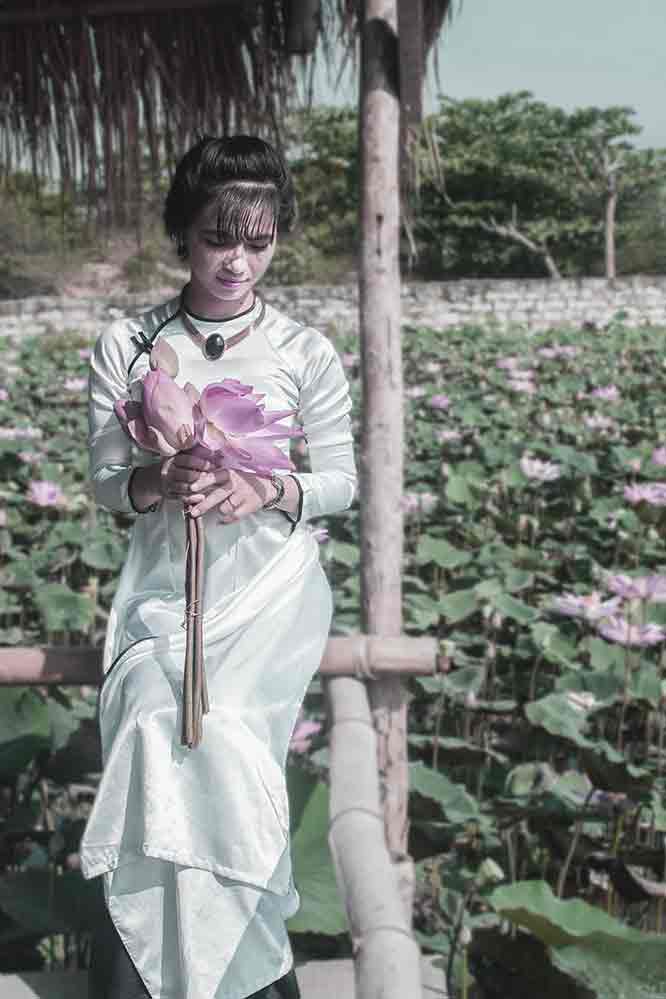
Vietnam is a unique land, full of enchantment and wonder. It is very picturesque and its scenery will stay in your memories for a lifetime. There are many worthwhile places to visit in Vietnam.
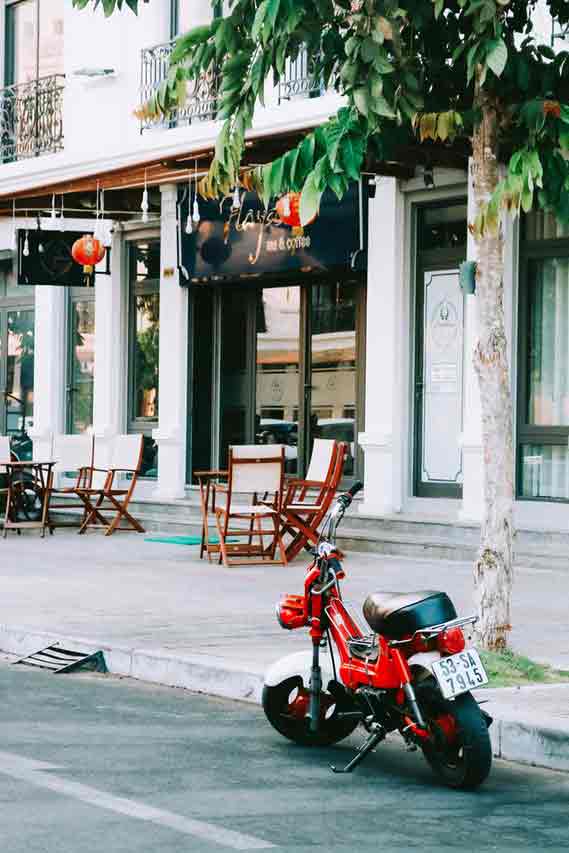
Vietnam is a unique land, full of enchantment and wonder. It is very picturesque, and its scenery will stay in your memories for a lifetime. There are many worthwhile places to visit in Vietnam.
No visit to Southeast Asia is complete without spending time in Vietnam.
Vietnam travel has long been exciting and inspiring for travelers from across the world.
Getting into Vietnam is not difficult, and a common plan is to fly into Saigon (also known as Ho Chi Minh City).
Hanoi, in the northern part of Vietnam, also has a major international airport and is a popular starting off point for a trip to Vietnam.
If possible, try to book your flights on one of the Asian airlines, which always provide excellent service.
You can book on a multi-airline search site, and if you can find a flight on Japan Airlines, Korean Airlines, Singapore or Thai, you will be happy that you did.
Also, it’s best to book ahead for hotels with a booking service such as Agoda, which offers great deals on hotels.
Things to Do in Vietnam
Vietnam spans 1,025 miles (1,600 km) from north to south, so if your times allows, it’s great to be able to visit places in the north, central, and south.
In the south, Saigon (Ho Chi Minh City) is the primary city to start a visit. It’s Vietnam’s largest city and main commercial and educational hub.
It’s an exciting and dynamic city, with a lot of history and interesting places to see. Saigon has a multitude of excellent restaurants and coffee shops to enjoy some wonderful Vietnamese food or to relax with a coffee or refreshing cold drink.
One of Vietnam’s most beautiful cities, Da Lat, draws mostly local travelers, but is a special treat if you are willing to get off the beaten tourist path. The area is referred to as the “central highlands,” but the city is situated more to the south, about seven hours by bus from Saigon.
On the coast, the place to see is Nha Trang, which has some of the most scenic beaches in Southeast Asia. The waters are clean and refreshing, the beaches are beautiful, white, and sandy, and the seafood there is delicious.
In the central part of Vietnam, Hue, Da Nang, and Hoi An are the places to see. They are closely situated to each other and it’s easy to get from one city to the next. Hue was the capital of Vietnam during the country’s imperial times, so much of what Hue has to offer centers around Vietnam’s emperors. The city itself, however, is nice and is an interesting place to visit.
In the north, you don’t want to miss Hanoi, the nation’s capital, with its many museums, shopping opportunities, and beautiful lakes and parks.
From Hanoi, you can go to Ha Long Bay and see Vietnam’s trademark water hills, limestone formations that rise out of the bay to create an intriguing rock jungle.
Finally, though it’s well off the beaten path, Sa Pa is a fascinating and beautiful city in the far north, not far from the Chinese border.
The majestic Fan Xi Pan (Vietnam’s highest mountain) dominates the scene from anywhere in town. Local tribal people still come to town dressed in their traditional attire, and not just for the sake of tourists.
This is how they dress as a matter of habit.
Precautions When Traveling in Vietnam
Vietnam is a very safe country to visit. Violent crimes against foreigners are very rare. However, keep in mind that Vietnam is an economically developing country and a lot of people are in much need of money.
As such, they will go to desperate means, including pickpocketing, bag/camera/phone snatching, scams, and yes, even robbery late at night in a dark alleyway.
Always be very protective of your wallet, purse, watch, mobile devices, camera, and anything else of value. Never leave these items unattended or laying out on a table or bench. Keep them in your pocket or firmly in your hands when in public, especially crowded places like markets, bus stations, and busy streets.
Also, it’s worth knowing that Vietnam has very uh…relaxed traffic rules. It’s not at all uncommon to see motorbikes driving on sidewalks, driving against traffic intentionally going the wrong way down a street, and cruising through red lights.
Cars, including taxis, do tend to drive safely and even stop for red lights. But drivers in Vietnam are not taught to watch out for pedestrians and basically, the larger the vehicle you are driving, the more “right-of-way” you have.
So, if you are on foot, you are at the bottom of the pecking order. Be constantly aware of what is 360 degrees around you at all times. Letting your attention wonder, even for two seconds, can be perilous to your safety.
When crossing the busy streets, first look BOTH WAYS, and never assume that someone is not barreling down the street in the wrong direction. Then, slowly but with great confidence walk into the street. You will see the drivers taking action to avoid hitting you, which they are good at doing.
But…don’t ever stop, increase or decrease speed, or change direction suddenly. Drivers have spotted you (hopefully) and have formulated a plan to veer around you. If you change your speed or bearing, it blows their plan and could cause you to get hit or them to get into an accident to avoid you.
The Food of Vietnam
Vietnamese food is incredibly unique and varied. There is seemingly a never-ending array of dishes to choose from.
Whether large or small, every city, town, and village has a multitude of eateries where you can sample the local cuisine and enjoy a memorable dining experience.
Each region of Vietnam takes great pride in offering its own specialties. It’s never too hard to find a great place to eat wherever you happen to be in Vietnam.
Vietnamese food uses a lot of vegetables, so it’s delicious, quite healthy, and fulfilling, but not too heavy.
Starter Menu
If you are new to Vietnamese cuisine and don’t know where to start, this section will give you some ideas. These are very traditional favorites and are staples of the Vietnamese cuisine.
Pho (flat rice noodles with either beef or chicken, scallions, mint leaves, and bean sprouts): Pho is a national favorite and an icon of Vietnamese food. You haven’t experienced Vietnam until you have had a nice hot bowl of this delicious soup. It’s more of a meal than just a starter. You’ll be able to easily find it either in a restaurant or on the street.
Bun Bo Hue (rice noodle dish with beef and pork, mint leaves, banana leaves and flowers, and bean sprouts): This soup is a favorite of central Vietnam. It can be a little spicy, but once you develop a taste for it, it’s delicious.
Gỏi Cuốn (fresh spring rolls): A staple of southern style Vietnamese cuisine, these are made of rice paper, shredded lettuce and carrots, shrimp, pork, and scallion leaf). They are low in fat and very healthy! Vegetarian options are available, where any meat is replaced with tofu.
Com Tam (broken rice served with a variety of main dishes and soup): This is another very traditional meal in Vietnam. Mostly a street food, it’s a small-grain rice (broken by beating it in a bag), and has a unique taste, different than other rice dishes. Every place that serves this dish will vary in what is offered with it, but typical choices include a grilled pork chop, chicken, fish, crab cake, and stuffed tofu.
Banh Xeo (crispy fried Vietnamese pancakes): These are a traditional dish made of rice flour, water, turmeric, pork, shrimp, scallion, and bean sprouts. They are eaten by wrapping a slice in mustard leaf or lettuce and mint leaves, basil or other herbs, and dipped in a diluted fish sauce with lime juice and garlic.
Vietnam Weather
A lot of people traveling to Vietnam for the first time often ask, “When is the best time to visit Vietnam? Should I be concerned about the weather?”
This is a good question and needs some consideration to make your trip the best it can be.
Vietnam experiences only two seasons: the dry season and the rainy season. But the climate between northern Vietnam (Hanoi), central Vietnam (Danang), and southern Vietnam (Ho Chi Minh City) can be quite diverse.
The weather can vary significantly from one region to the next because of the country’s shape, which is long and thin and stretches over a relatively large range in latitude.
Vietnam’s land mass spans both the tropical and subtropical zones.
Even during the rainy season, however, it’s not as bad in Hanoi and Ho Chi Minh City as it’s made out to be in the movies. Central Vietnam is the rainiest by far.
Altitudes also vary considerably throughout the country and some parts are quite hilly. Thus, Vietnam’s climate can be noticeably different in the highlands than in the marshy Mekong Delta. In the lowlands, and especially in the southern region, temperatures are almost always warm, and humidity is high.
In the north, near Hanoi, for example, Vietnam is typically warm and humid, though in January in Hanoi, the temperature can drop to as low as 53°F (12°C), hardly worth breaking out the parkas for.
However, in the far north, near Sa Pa, and at higher elevations, it occasionally snows during the cooler months!
Vietnam’s climate is affected by monsoons, so the nation experiences high levels of rainfall, but also enjoys many full days of sunshine, especially during the dry season (November – April).
Learn More About Travel to Vietnam
I hope you enjoyed my Vietnam Travel Guide. For more great information and tips for travel to Vietnam, please see my blog posts below.
10 Best Things to Do in Hanoi
You may be wondering what are the the best things to do in Hanoi. No trip to Vietnam is complete without a respectable visit to this bustling capital city of Vietnam. With its ancient temples, lively markets, delicious street food, and rich cultural heritage, Hanoi is...
8 Best Things to do in Hoi An, Vietnam
Finding fun and interesting things to do in Hoi An, a lovely and charming city in central Vietnam, is not hard to do. The city will transport you back in time with its well-preserved historical architecture and serene ambiance. Nestled on the banks of the Thu Bon...
Top 8 Things to Do in Saigon for a Traveler
Ho Chi Minh City, also known as Saigon, is one of the most popular destinations in Vietnam. The city is full of history, culture, and life, making it a perfect spot for travelers to explore. Let's take a look at the top eight attractions that you must visit while in...
Get the Book
Available as an eBook or paperback, this all-in-one guide will provide the beneficial information to help you plan and enjoy your trip with efficiency and lower stress.
Get all the great lessons in the Travel Guides plus a lot more details. You get all the great tips to experience smarter travel to Southeast Asia.

